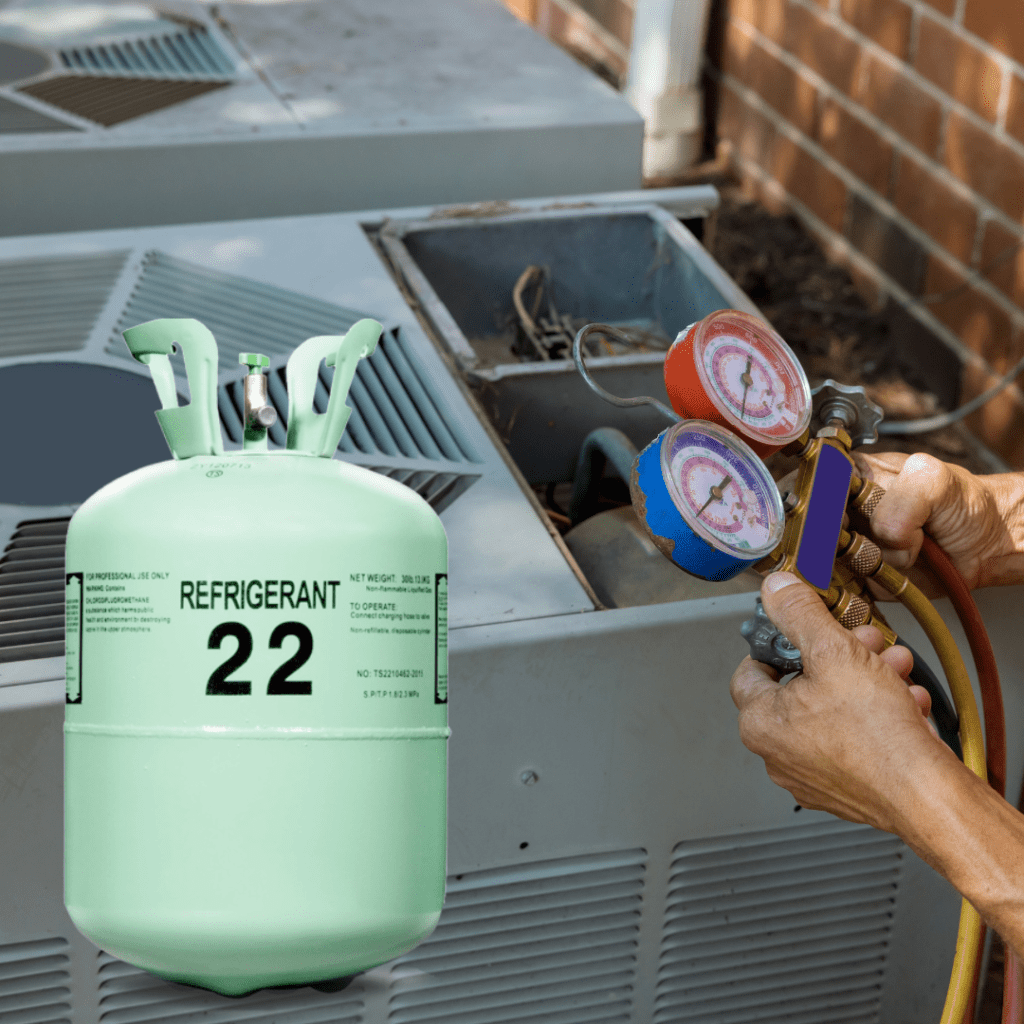If you’ve been told that a “drop-in” refrigerant is just as good as R-22, let’s clear the air, because the truth is, it’s not.
With R-22 (also known as HCFC-22) being phased out due to its ozone-depleting properties, a lot of HVAC companies have started turning to alternative refrigerants like MO99, R-407C, and R-422D as so-called “drop-in” replacements. The idea sounds simple: swap out the old R-22, pump in the new stuff, and call it good.
But in real-world HVAC systems, it’s never really that easy, and your system may pay the price if it’s not handled correctly.
What is a Drop-In Refrigerant?
Drop-in refrigerants are marketed as direct replacements for R-22. The term implies that the refrigerant can be added to an existing R-22 system without needing major component changes. From a homeowner’s perspective, it sounds like a cost-effective fix and that’s exactly what some contractors want you to think.
Here’s the catch: these refrigerants are not chemically identical to R-22. And in HVAC systems, even small differences in pressure, oil compatibility, or thermal properties can make a big difference in performance, longevity, and energy efficiency.
A Brief History of the R-22 Phase-Out

R-22 has been used in residential and commercial air conditioning systems for decades. But under the Montreal Protocol and the EPA’s Clean Air Act regulations, R-22 was officially phased out in the U.S. beginning in 2010. As of January 1, 2020, it’s illegal to produce or import new R-22 in the United States.
That leaves property owners with three basic choices:
- Use reclaimed or stockpiled R-22 (which is still legal to purchase and use).
- Retrofit the existing system to accommodate a different refrigerant.
- Replace the entire system with one that uses a modern refrigerant like R-410A or R-32.
The Hidden Costs of Using R-22 Replacements

Here’s what HVAC techs like us at Utah Mechanical Systems have seen time and time again:
1. Lower Efficiency
R-22 systems were precisely engineered to run at specific pressures, temperatures, and oil flow rates. Replacement refrigerants like R-407C or MO99 usually operate at different pressures and exhibit different thermodynamic properties. That means your system can’t perform the way it was designed to.
Even if it appears to cool your home “okay,” it might take 10-20% longer to reach the target temperature—and in extreme summer heat, it might not keep up at all. That reduced efficiency translates to more wear and tear and higher operational costs.
2. Compressor Strain and Premature Failure
R-22 is compatible with mineral oil, which many older compressors rely on for lubrication. Most drop-in refrigerants require synthetic oils like POE (polyolester oil). In some cases, contractors attempt to use drop-ins without a complete oil change or flush, hoping for a quick fix.
This results in poor oil return, reduced lubrication, and increased friction, especially inside the compressor. It might not fail today or tomorrow, but damage accumulates over time. That’s why we call drop-in refrigerants a “slow killer” of older R-22 systems.
3. Mixed or Unpredictable Performance
We’ve serviced systems where the drop-in refrigerant cooled decently, until the temperature soared past 95°F. In hot climates like Utah, where summer highs frequently exceed 90°F, this is a real concern.
Why? Because most of these refrigerants weren’t engineered with your specific system in mind. They are blends designed to be “close enough,” but close doesn’t cut it when you’re relying on performance during peak demand.
4. Higher Utility Bills
When efficiency drops, your AC has to work harder and run longer. Even though the replacement refrigerant itself may be cheaper than reclaimed R-22, the energy cost increase often wipes out any savings in just one summer season.
Let’s say you save $200 on refrigerant but your power bill rises by $25 a month for 5 months, that’s a net loss. And don’t forget: the extra runtime puts more strain on aging parts, increasing the risk of breakdowns and repairs.
Why We Still Stick with R-22 (When We Can)

At Utah Mechanical Systems, we still carry and use reclaimed, certified R-22 whenever it makes sense. Yes, it does cost more upfront but it’s the only refrigerant guaranteed to work as intended in an R-22 system. No pressure mismatches. No oil incompatibilities. No second-guessing performance.
If you’re trying to get a few more reliable years out of an older system, genuine R-22 is the way to go. We’ll help you make a cost-benefit decision based on your system’s condition, your energy bills, and your future plans.
And when it’s time to replace your system? We’ll help you transition to a modern, energy-efficient unit built for next-gen refrigerants like R-410A or R-32 with zero ozone depletion and stronger performance.
Bottom Line: Think Before You Drop-In
R-22 was specifically engineered for your system. Drop-ins are a workaround and not a one-size-fits-all solution. If you care about efficiency, system lifespan, and reliable cooling, you need more than just a quick fix. You’re gonna need a smart and informed strategy.
Got questions? We’re here to help.
Call or text 801-797-3737 and let’s talk about your R-22 options. At Utah Mechanical Systems, we don’t do shortcuts, we do it right the first time.

